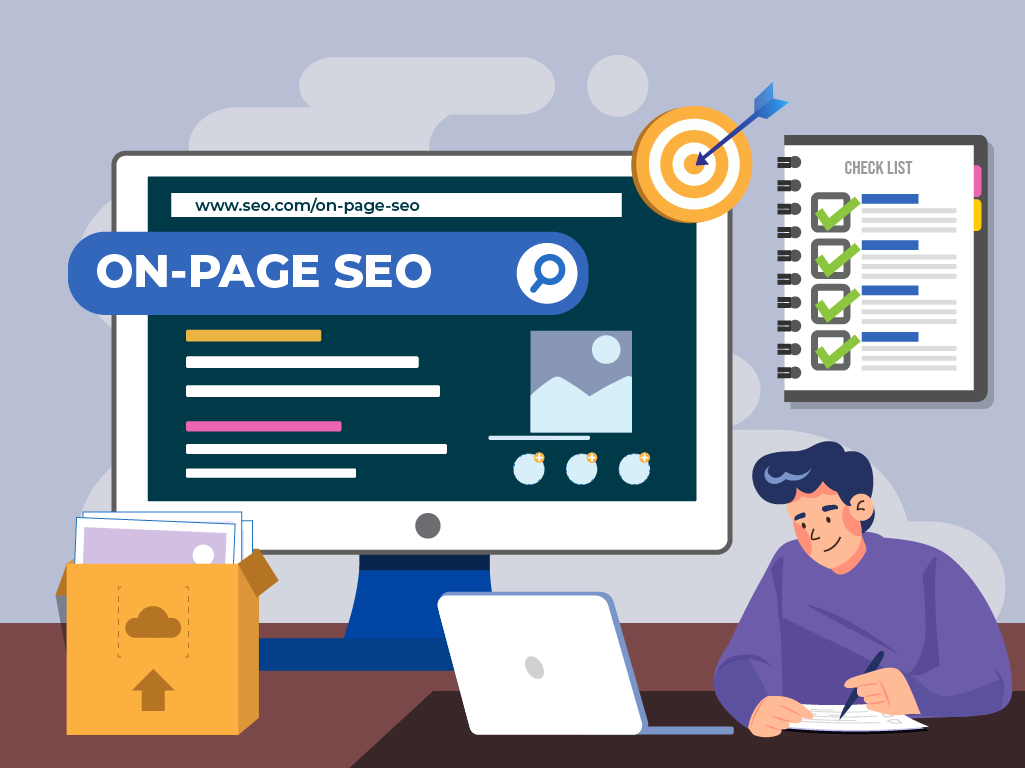Mar 06, 2025
On-Page SEO Checklist: Everything You Need to Rank Higher

A Complete On-Page SEO Framework to Elevate Your Visibility
If your website isn't ranking—even after publishing valuable content—it’s likely your on-page SEO is either outdated or incomplete.
Search engines have become smarter, and your website needs to meet more than just keyword criteria. From how your pages are structured to how fast they load, every element plays a role. This is where a complete on page SEO checklist makes all the difference.
Whether you're an agency, brand, or small business, this checklist will help ensure your web pages are discoverable, readable, and optimized for both users and search engines.
What Is On-Page SEO?
On-page SEO refers to the practice of optimizing individual web pages for search engines and users. It involves everything within your control—content quality, keyword placement, technical elements, and user experience factors.
Unlike off-page SEO, which focuses on backlinks and external signals, on-page SEO allows you to build a strong foundation that supports organic growth.
Why Is an On Page SEO Checklist Important?
Without a clear and consistent on-page process, you risk:
- Targeting the wrong intent
- Diluting keyword focus
- Slowing down your site
- Missing internal link opportunities
- Getting ignored by search engines
A checklist ensures that nothing slips through the cracks. It streamlines optimization across every content asset and improves your chances of sustainable, long-term rankings.
The Ultimate On Page SEO Checklist
Here’s the complete breakdown of everything you need to optimize for better performance and higher rankings:
1. Understand and Target the Right Keyword Intent
Start with keyword research, but go beyond just search volume. Understand what the searcher is trying to achieve.
- Choose a primary keyword for each page
- Map the search intent clearly: is it informational, navigational, or transactional?
- Add related phrases and secondary keywords that complement your topic
Content that matches user intent ranks faster, performs better, and drives more meaningful engagement.
2. Optimize the URL for Simplicity and Relevance
Your URL should be short, clean, and keyword-rich.
- Include the primary keyword
- Avoid unnecessary parameters or stop words
- Make it readable and static
For example, a URL like /on-page-seo-checklist is both SEO-friendly and user-friendly.
3. Craft an Effective SEO Title Tag
The title tag is one of the most important on-page elements.
- Use the primary keyword close to the beginning
- Keep it under 60 characters
- Make it unique and relevant to the content
It’s your page’s first impression in the search results—don’t waste it.
4. Write a Compelling Meta Description
Though not a direct ranking factor, a strong meta description improves click-through rates.
- Include the primary keyword naturally
- Keep it under 150–160 characters
- Describe what the user will gain by visiting your page
It’s your chance to turn impressions into clicks.
5. Use Headers (H1–H6) Strategically
Structure matters—for both readability and SEO.
- Use one H1 tag per page (your main headline)
- Use H2s for major sections, and H3s/H4s for sub-points
- Incorporate keywords naturally
Good structure helps both search engines and readers scan your content efficiently.
6. Deliver High-Value, Intent-Focused Content
The content must go beyond keywords. It should solve real problems and answer specific questions.
- Address the search intent clearly
- Keep paragraphs short and digestible
- Avoid keyword stuffing
- Use natural language and provide original insights
High-quality content builds trust, reduces bounce rates, and increases dwell time.
7. Use Internal Linking Thoughtfully
Internal links guide users and help search engines understand the structure of your site.
- Link to relevant service pages with clear anchor text
- Keep anchor phrases descriptive, not generic
- Ensure links enhance user understanding—not distract from it
For example, if your content explains how to identify technical issues affecting a website’s performance, it makes sense to guide readers toward your technical SEO services by referencing how expert-led audits can uncover and resolve crawl errors, broken links, or site speed problems. Mentioning comprehensive website audit solutions in this context not only adds value for the reader but also reinforces trust in your expertise.
8. Optimize Image Elements
Images can support the message—but they must be optimized.
- Use descriptive filenames (e.g., seo-header-image.jpg)
- Add relevant alt text for accessibility and SEO
- Compress images to keep load times fast
- Use consistent styling and placement
Visuals should enhance—not interrupt—the user journey.
9. Improve Page Speed and Core Web Vitals
Performance is a ranking factor, especially with Google’s focus on user experience.
- Minify JavaScript and CSS
- Enable browser caching
- Use a fast, reliable hosting provider
- Avoid large media files that delay loading
Page speed not only affects SEO—it directly impacts conversions.
10. Ensure Mobile Responsiveness
Mobile-first indexing means your mobile version is the priority for search engines.
- Use responsive design for all devices
- Ensure buttons, forms, and CTAs are tap-friendly
- Avoid mobile-only popups that hurt usability
If your content isn’t seamless on mobile, you’re losing half your audience by default.
11. Implement Schema Markup
Structured data (schema) helps search engines understand the content's purpose.
- Add schema for articles, FAQs, products, or local businesses
- Use the correct format and test it before publishing
- Only add markup when it adds value
Schema can enhance your listings with rich results, improving visibility and credibility.
12. Fix Broken Links and Update Outdated Content
Content maintenance is a part of on-page SEO too.
- Audit links regularly to identify 404 errors
- Update facts, dates, and internal references
- Remove or replace irrelevant or outdated resources
A clean, up-to-date site earns trust from both users and search engines.
13. Add a Clear Call to Action (CTA)
Every page should guide users toward an action.
- Place CTAs where intent is highest
- Keep the messaging relevant and value-driven
- Use contrast and hierarchy to make them noticeable
Whether it’s subscribing, buying, or booking a consultation—make the next step obvious.
14. Use Canonical Tags When Needed
Duplicate or near-duplicate content can confuse search engines and split ranking signals.
- Use canonical tags to point to your preferred version
- Avoid unnecessary variations in URLs for the same content
- Especially helpful for product listings, pagination, or filters
Canonicalization helps consolidate your SEO equity in one place.
15. Re-Optimize Underperforming Pages
Pages that don’t rank on the first few pages still have value.
- Analyze performance metrics
- Refresh content, structure, or keyword focus
- Add internal links from related high-authority pages
Continuous improvement is a long-term SEO strategy, not a one-time fix.
Final Thoughts
This on page SEO checklist isn’t just a routine—it’s a roadmap to better rankings, stronger visibility, and more qualified organic traffic. From the structure of your content to the speed of your site, every detail matters.
When you execute each of these steps consistently across your website, you’ll see measurable improvements in rankings, engagement, and conversions.
If you’re ready to go beyond checklists and implement a strategic on-page approach that scales, explore our SEO services—perfect for businesses that want growth built on substance, not shortcuts.
At Uprankx, we don’t just optimize websites—we architect performance. Because your success drives everything we do.




